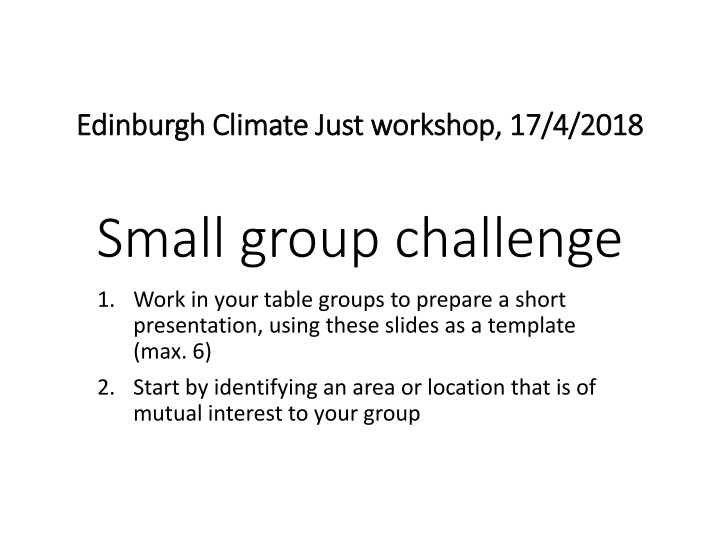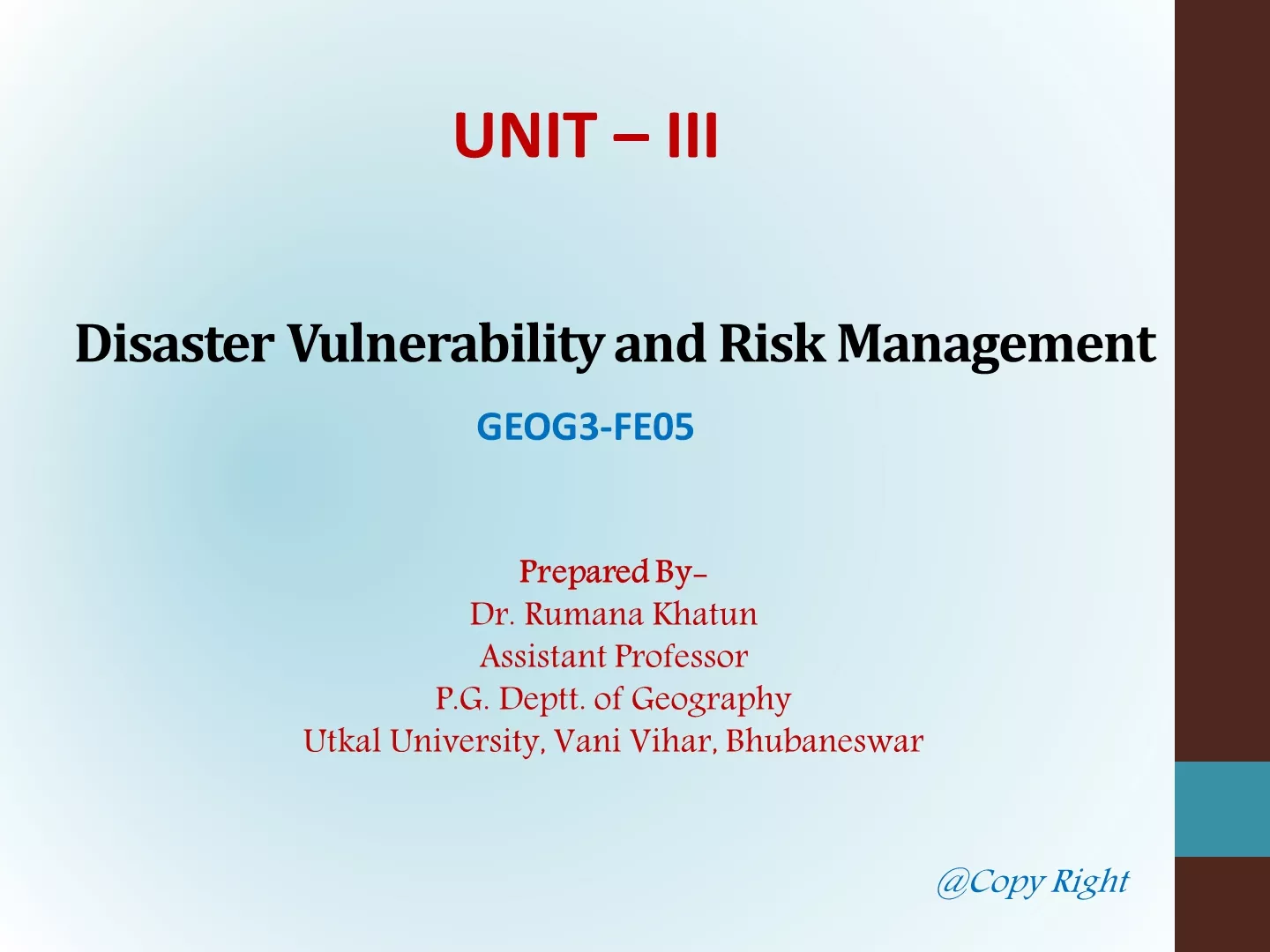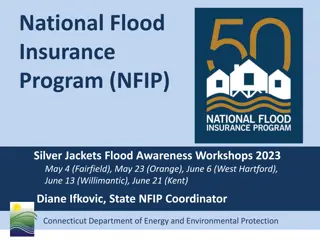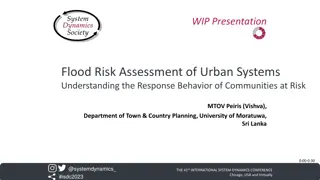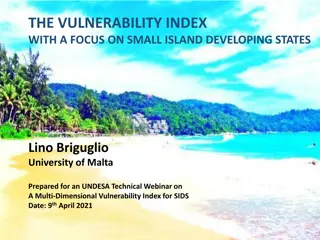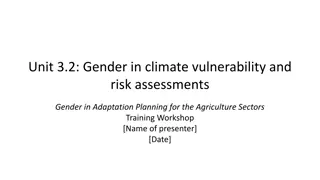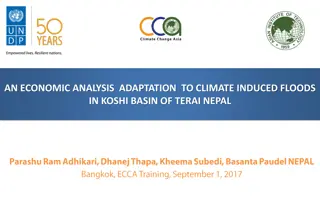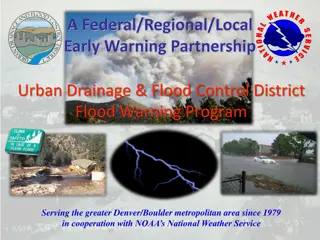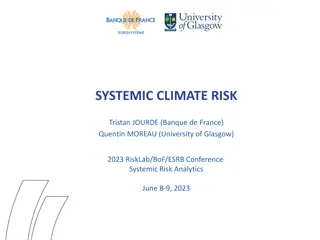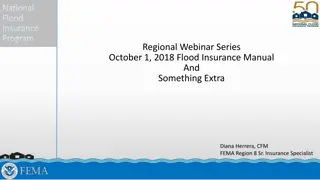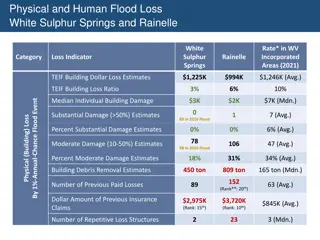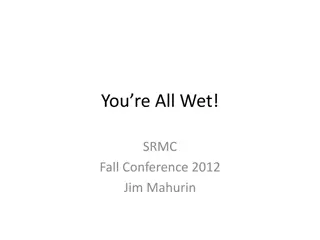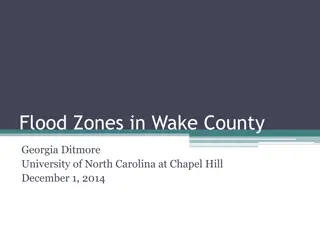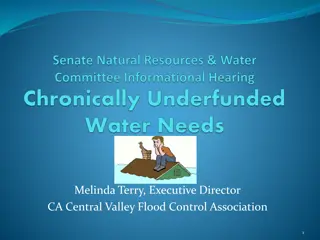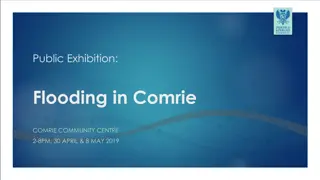Social Flood Risk and Vulnerability in Edinburgh: A Climate Justice Workshop Analysis
Dive into an in-depth analysis of the social flood risk and neighborhood flood vulnerability in Edinburgh through a workshop presentation. Explore how climate change will impact flood risks, identify vulnerable groups at high risk, and make a compelling case for action towards climate justice.
Download Presentation

Please find below an Image/Link to download the presentation.
The content on the website is provided AS IS for your information and personal use only. It may not be sold, licensed, or shared on other websites without obtaining consent from the author.If you encounter any issues during the download, it is possible that the publisher has removed the file from their server.
You are allowed to download the files provided on this website for personal or commercial use, subject to the condition that they are used lawfully. All files are the property of their respective owners.
The content on the website is provided AS IS for your information and personal use only. It may not be sold, licensed, or shared on other websites without obtaining consent from the author.
E N D
Presentation Transcript
Edinburgh Climate Just workshop, 17/4/2018 Edinburgh Climate Just workshop, 17/4/2018 Small group challenge 1. Work in your table groups to prepare a short presentation, using these slides as a template (max. 6) 2. Start by identifying an area or location that is of mutual interest to your group
What is the Social Flood Risk of this area? Use the Map Tool to explore the area s Social Flood Risk Explore how flooding risks will change over time with climate change (using the 2050s maps with both 2 and 4 C climate scenarios) Consider surface water flooding as well as river and coastal flooding. Also examine risks to the individual as well as the group Summarise your findings and include maps to illustrate (use the Windows Snipping Tool to copy them from the browser)
What is the Neighbourhood Flood Vulnerability of the area? Use the Map Tool to investigate the different factors contributing to any high levels in the Neighbourhood Flood Vulnerability Index Look at the overall NFVI map layer for an overview, then delve into each of the associated five sub-folders Search through the various map layers and try to spot any neighbourhoods with particularly high indicator values Summarise your findings to help create a profile of the area and illustrate with map(s) if this helps convey the information more effectively
Who is vulnerable and why? Make a note of any vulnerable groups that are well represented in your area (these are included as separate map layers within the NFVI folders you have been looking through tip: use the Search bar above the map folders on the left by typing in people and they will show up) Now switch to the text based part of the site Who is Vulnerable? to look at why particular groups are vulnerable to flooding Briefly summarise what you ve found
Make a case for action Look at the Why does climate justice matter? section to help make an argument for why action is needed. Look at the Scotland version of the presentation for more specific Scottish legislative context Look at Section 4 & 5 in the relevant Who is Vulnerable? Pages to identify some potential actions that could be taken Look at What actions support resilience? for further ideas Supplement your case by finding examples from elsewhere in the Case Studies section, or by finding further evidence in the Resources library (using the filters to narrow down your search)
Conclusion Now reflect on your group s own knowledge and experience of that area and/or those issues to check that your findings ring true. Add in any further insights from your collective knowledge to strengthen your case. Now get your slides ready to present!
